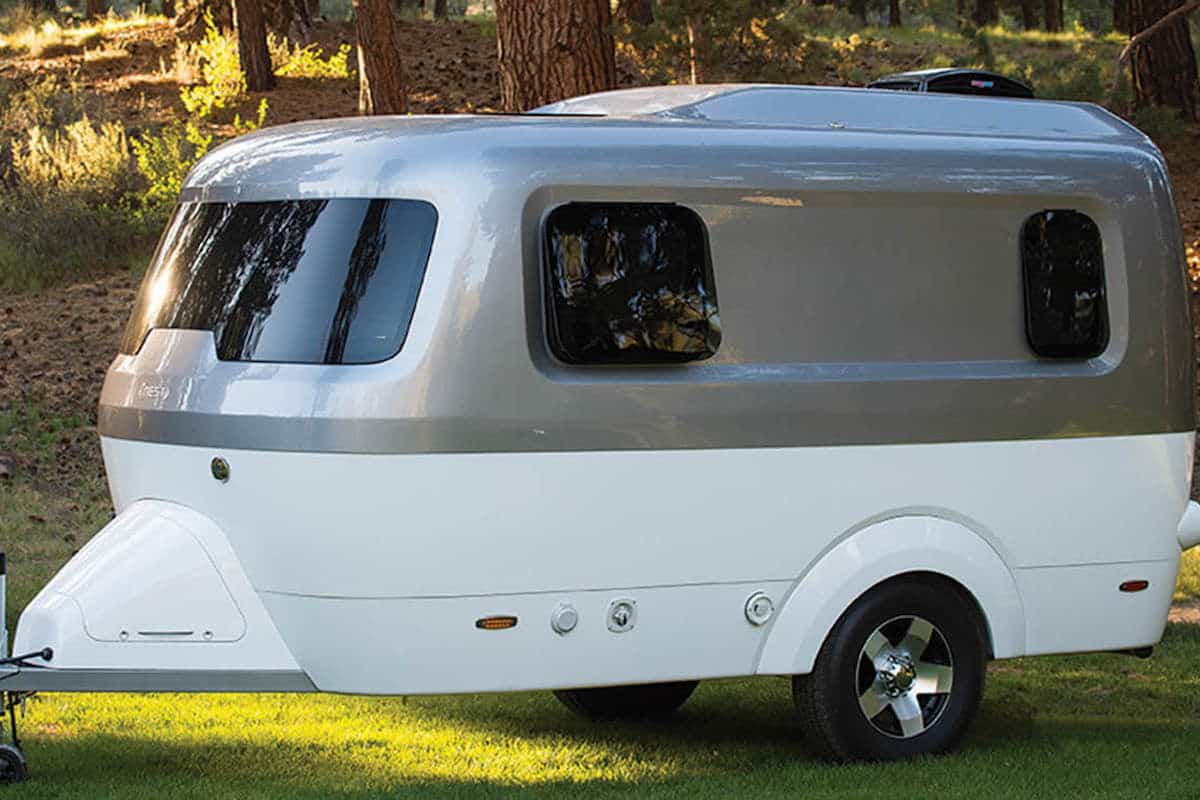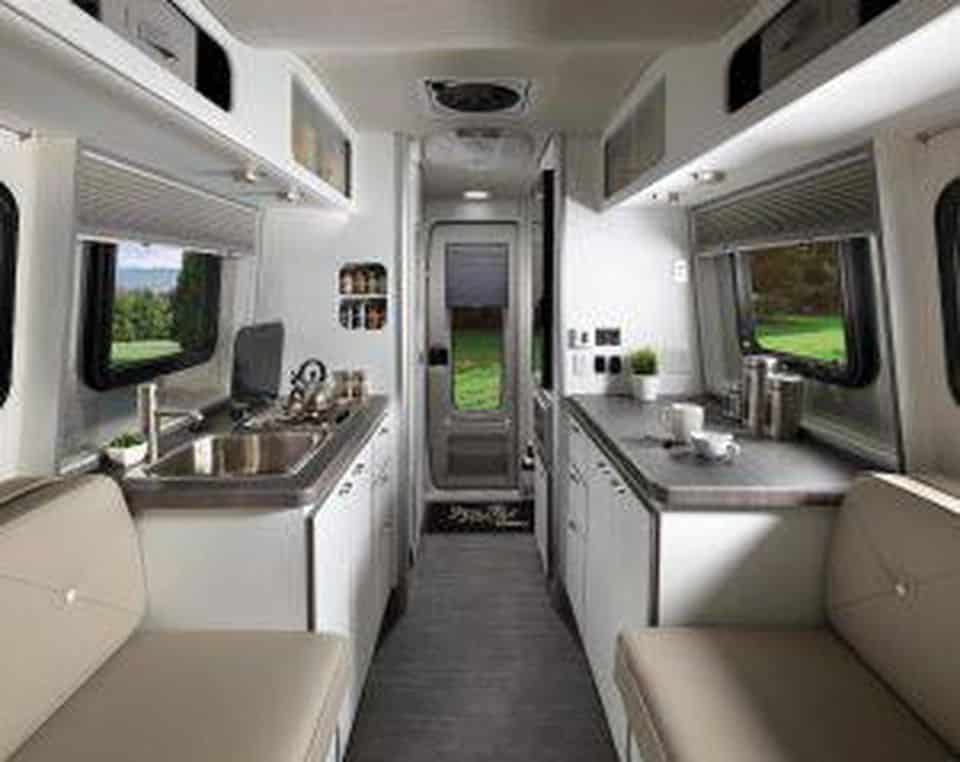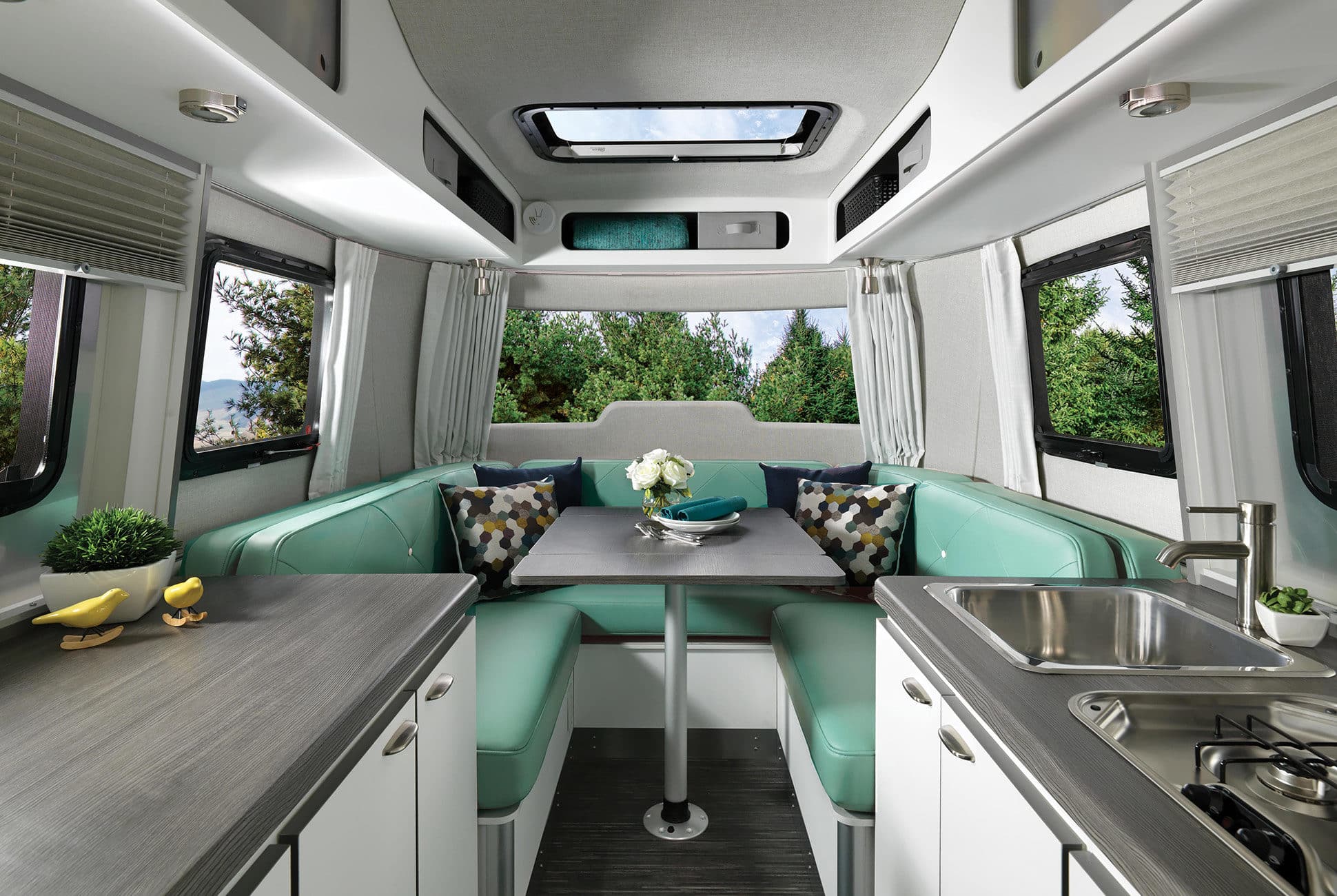Even people who are not fond of camping get a gleam in their eyes when talking about the aluminum, rounded camping trailers pioneered by Airstream. Trailers made by Airstream in Jackson Center, Ohio, are hip, retro and modern – the perfect antidote to the large, traditional RV.
Now Airstream has decided to get out of its comfort zone by creating a much smaller fiberglass trailer. What’s an Airstream without its recognizable aluminum shell? As it turns out, it’s a recreational vehicle for the segment of the population who prizes efficiency in design and mobility.
The new trailer is called the Nest, and it was born from practicality. In aesthetics, the Nest appears closer to a tiny train carriage than it does to its aluminum forbears, complete with the rounded windows, backdoor and gray and white paint job associated with trains. The front glass is supposedly inspired by ski goggles. The trailer still carries low to the ground.
Designer Bryan Thompson, who came from the world of automotive design, used fiberglass to make a very small and very light trailer, which was acquired by Airstream. Although departing from aluminum is a risk considering the retro-mania that possesses the company’s biggest fans. But the company knows that to survive in the tough RV market, it needs to attract more customers, and that means a lighter and less expensive trailer. Now is a good time for Airstream to play around with this concept, since there is a trend toward living in tiny houses and being completely mobile.
The Airstream looks great inside. It comes with a refrigerator, stove, microwave and a bathroom with a shower and toilet. The total interior comes in at about 112 square feet. This means the outside is just 17 feet long and 7 feet wide – just right for the minimal traveler. It sits on just two wheels and doesn’t require a pickup truck to tow. A medium-sized SUV can haul the 3,400-lb Nest.
The Nest will start at around $45,900 – still costly, but at the low end for an Airstream. Airstream’s classic version costs $139,000, the same as a nice house in many areas of the country.
RVs are increasingly popular with millennials who can’t afford to buy a house or don’t want to. There is a movement of people who prefer to freelance, which makes them location independent. Many have adopted a traveling lifestyle, converting vans and old RVs into permanent homes, or even building their own.
It’s easy to see someone acquiring the Nest for the purpose of hitting up the summer festival circuit. At the other end of the age spectrum, many new retirees are hitting the open road. They are doing it a bit differently than their parents’ generation, which took long trips in a full-size, drivable RV. The new breed of traveler prefers something streamlined, and they are also taking much longer trips – some even selling their homes. Winnebago, which epitomized the enormous RVs of old, saw the 17 percent spike in RV sales and also decided to capitalize on this movement, offering its tiny Minnie Drop for just $20,000.
Although the Airstream Nest comes in at more than twice the Minnie’s cost, the company is betting on the Airstream’s legacy of cool to keep sales strong.





